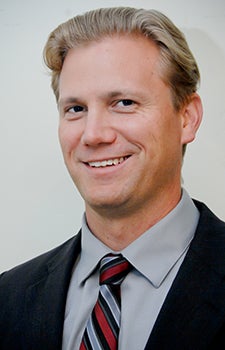
Unique corps makes volunteering for scientific research easy, speeding studies
When USC Dornsife’s Daniel Nation designs a research study, he knows he has one significant advantage over colleagues at many other institutions: a vast, diverse pool of eager potential participants. That’s thanks to the Healthy Minds Research Volunteer Corps, a database of people who have volunteered to participate in research at USC.
“It’s hard to overstate the importance of it, really,” said Nation, assistant professor of psychology at USC Dornsife.
Created and managed by Mara Mather, professor of gerontology at USC Leonard Davis School of Gerontology with a joint appointment in psychology at USC Dornsife, the Healthy Minds database aids scientists doing research on aging and the brain. It includes about 1,000 potential research participants of varying racial and socioeconomic backgrounds from across the greater Los Angeles area.
Anyone doing research at USC can apply to access it on a study-by-study basis, and, if given the green light by a peer review committee and approval from the USC institutional review board, he or she can search for potential participants by a number of variables, including age and how frequently they’ve been contacted by other researchers in the past.
Mather started the database when she joined the university in 2007 and needed subjects for her research. She studies how aging affects emotion and cognition and was looking for a varied group of participants.
“For various reasons, many existing study pools of older adults are fairly homogenous in terms of race and socioeconomic status,” she said. “When we test older people who are mostly white or largely middle- and upper-class, for example, it might not provide us with accurate data that will help us address challenges for tomorrow’s older Americans, who are projected to be more diverse than previous generations.”
Perseverance pays off in research
Naysayers told her accessing people from the L.A. community would be an uphill battle because of traffic and other challenges, Mather said. But she persevered, advertising “everywhere we can think of,” she said, including senior centers, local newspapers, online, informational volunteer fairs and AARP websites. People began signing up.
“Our work is more generalizable to the public because it more accurately reflects our population,” Mather said. “It’s also helpful in getting National Institutes of Health grant money; they want ethnic and racial diversity in our research participants because it improves the science we publish.”

Dan Nation
Nation said it’s transformed his research by shrinking the time needed to hunt down willing subjects.
“If you go into the community and recruit, that’s very hard to do,” said Nation, who studies how changes in the cardiovascular system impact the aging brain. “You can make 2,000 phone calls and get two people.”
Volunteering for scientific research
One frequent study participant is Jim Yee, a 74-year-old retired teacher who lives with his wife, Candy, in Cerritos, California. Yee and his wife, who has also taken part in numerous studies, first heard of Healthy Minds when they attended a talk at the USC Leonard Davis School a few years ago. He has since participated in four studies, including one conducted by Mather’s lab this past fall.
In the latest study, Yee was asked to meditate while hooked up to a monitor that tracked arousal. He found value in learning to quiet his mind, and he also liked knowing he was being useful.
“I’m always anxious for more,” Yee said. “I’m hoping that I’m helping [researchers] … learn something that would help people in general.”